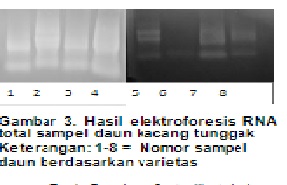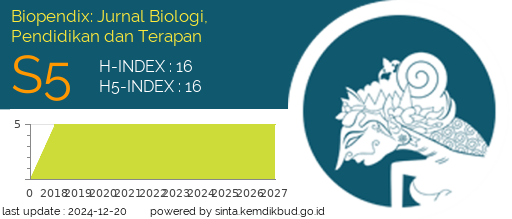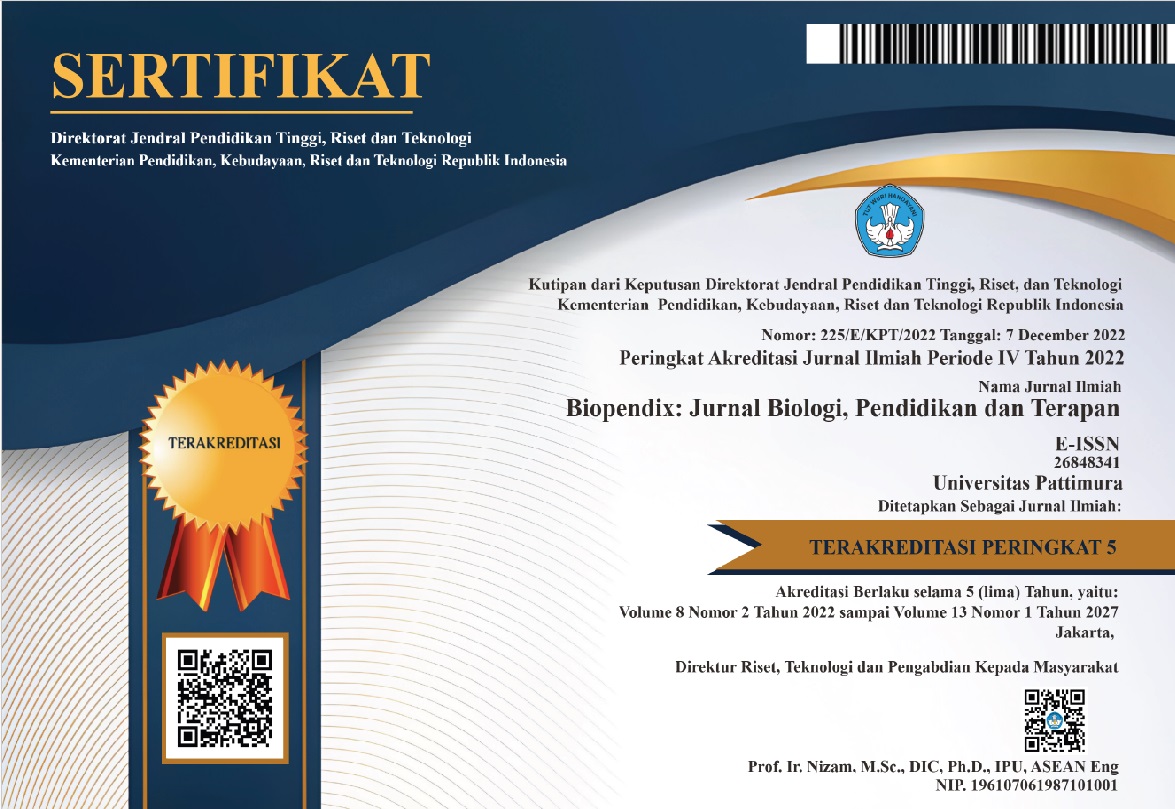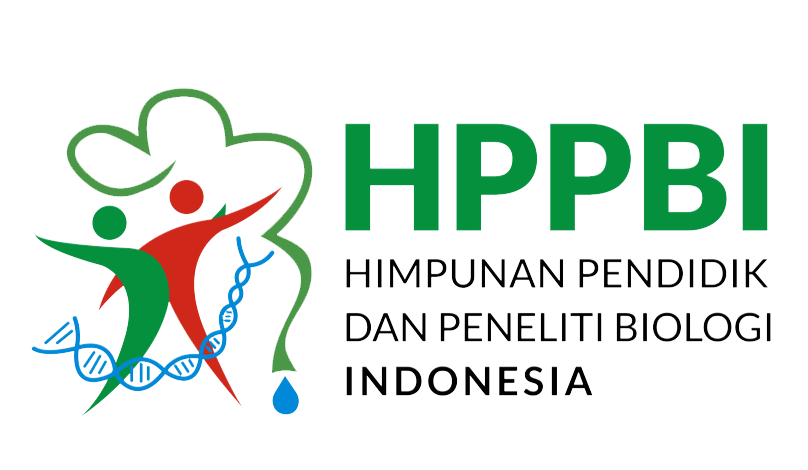ANALISIS KUALITAS DAN KUANTITAS RNA TOTAL VARIETAS KACANG TUNGGAK (Vigna unguiculata L. Walp) ASAL KABUPATEN MALUKU BARAT DAYA
Abstract
Background: A preliminary study of total RNA isolation from young cowpea (Vigna unguiculata L. Walp) plant has been carried out. The results of total RNA isolation both qualitatively and quantitatively are a prerequisite for research related to gene expression. This study aims to analyze the quality and quantity of total RNA of cowpea leaves from Southwest Maluku district.
Methods: The leaf samples used in this study were from eight varieties of cowpea plants at the age of four weeks after planting. Furthermore, RNA isolation used the Accuzol kit while the quality and quantity analysis was carried out by electrophoresis and spectrophotometry.
Results: The results showed that the leaves from the sample collection for 4 weeks had good growth and were followed by total RNA isolation. Qualitatively, the results of the total RNA isolates electrophoresis had 1-3 bands in each variety, while quantitatively the total RNA isolates had absorbance values ​​ranging from 1.50 to 2.03 and total RNA concentrations ranging from 1398.2 to 9884.1 ng / µl.
Conclusion: The quality and quantity of total RNA is very important in gene expression analysis
Downloads

Authors who publish with this Journal agree to the following terms:
- Author retain copyright and grant the journal right of first publication with the work simultaneously licensed under a creative commons attribution license that allow others to share the work within an acknowledgement of the work’s authorship and initial publication of this journal.
- Authors are able to enter into separate, additional contractual arrangement for the non-exclusive distribution of the journal’s published version of the work (e.g. acknowledgement of its initial publication in this journal).
- Authors are permitted and encouraged to post their work online (e.g. in institutional repositories or on their websites) prior to and during the submission process, as it can lead to productive exchanges, as well as earlier and greater citation of published works




 2
2






